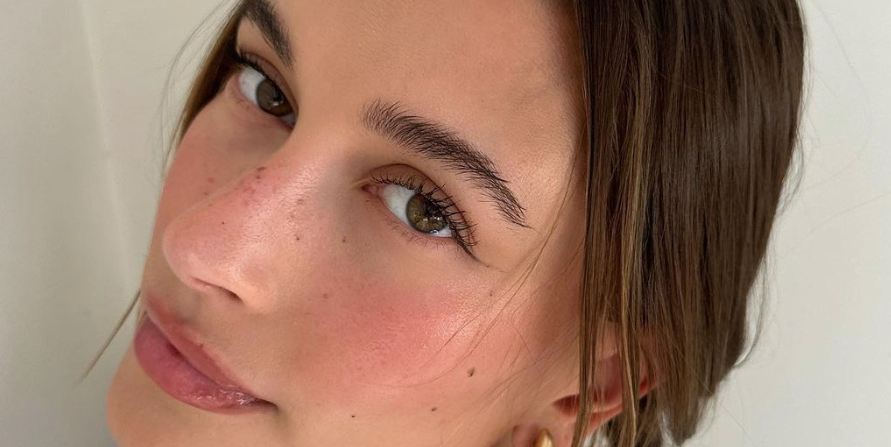What is perioral dermatitis? Treatment, symptoms and causes

- Oops!Something went wrong.Please try again later.
Skin conditions are common; between hormonal acne breakouts, a recurring psoriasis rash or stress-induced eczema flare-ups, you’ve probably fallen victim to at least one in your lifetime. However, one skin condition that has gone very much unspoken about is perioral dermatitis (also referred to as POD) – though, that is until everyone’s favourite IT girl, Hailey Bieber recently spoke out about her issues suffering with the condition.
In late March 2024, Hailey took to her TikTok account to share a video drawing awareness to perioral dermatitis. Narrating over videos showing her breakouts she says: “So, I wanted to talk about perioral dermatitis because this is something that I have had since I was about 19 or 20 and I know a lot of people deal with it and struggle with it as well.”
“I’m having a pretty bad flare-up right now, so I wanted to share what I use when I’m having a flare-up,” the Rhode founder and model candidly shares.
“So, at night I use a prescription azealic acid cream, which really helps with the inflammation of the perioral dermatitis. And in the daytime, I use something called clindamycin which is also a prescription that you can get from a dermatologist.
“The only other things that I use when I’m having a flare-up of POD would be our Rhode Glazing Milk; it’s super gentle, it helps calm the skin, it doesn’t irritate it any further. And this is the next morning after I slept with my prescription and glazing milk on. You can tell that it’s a lot less irritated and angry.”
But what actually is said flare-up? How does one occur? And will Hailey’s solutions work for you, too? Well, Cosmopolitan UK spoke to Dermatological and Skin+Me expert, Dr Beibei Du-Harpur and Cosmetic Dermatologist, Dr Sam Bunting to get the low-down of everything perioral dermatitis.
What is perioral dermatitis?
“Perioral dermatitis is when the skin becomes extremely sensitive and develops red bumps and spots,” says Dr Beibei Du-Harpur. The word ‘perioral’ means ‘around the mouth’ and Dr Beibei adds that this is because that’s where the breakouts occur.
However, she also says that “it can actually affect the skin around the eyes as well.” When it affects multiple sites on the face, it is referred to as “periorificial dermatitis,” Dr Beibei says. Periorificial is defined as ‘around an opening’.
It’s also worth noting that “this skin condition is most common in women, with only around 10 per cent of those with perioral dermatitis being men,” explains Dr Sam Bunting.
What are the symptoms of periorificial dermatitis?
As for symptoms, other than the visible bumps that as mentioned, may be red or even dry and flakey, Dr Du-Harpur says that the skin affected skin will often “itch or burn, and application of skincare and makeup can sting or be uncomfortable.”
What causes perioral dermatitis?
Unfortunately (and annoyingly), the specific cause of the skin issue is not know. Having said that, both Dr Du-Harpur and Dr Bunting both agree that overusing certain skincare products can trigger and/or irritate POD.
“Perioral dermatitis can be triggered by an over-use of irritating products, such as retinoids and exfoliants, on the skin,” says Dr Du-Harpur, while Dr Bunting adds that “common triggers include topical steroids (especially the stronger variants) and even fluoridated toothpaste. As with many other inflammatory skin issues, this skin condition is also exacerbated by stress.”
Perioral dermatitis vs acne
Due to their similarities in look, it can be very hard to differentiate between POD and acne. “Whereas acne originates from the hair follicle/sebaceous gland and is characterised by follicles with too much keratin, this is not the case at all in perioral dermatitis,” Dr Du-Harpur explains.
And while that may sound a little too sciencey for us normies (don't worry, I feel ya), Dr Bunting says that the key difference is that “there are no clogged pores or comedones with perioral dermatitis.”
Perioral dermatitis treatment
As with other forms of dermatitis (eczema, for example), POD can be challenging to treat and your skin can often relapse. However, that's not to say there isn't a solution to maintain and keep the condition at bay.
First things first, we recommend immediately suspending your current skincare routine, as it's more than likely something that you've used recently has triggered such a reaction. “Using non-fragranced, gentle cleansers and lightweight moisturisers (very heavy moisturisers can flare it) are a good idea,” recommends Dr Du-Harpur.
Plus, it's worth taking a gander at the ingredients in your toothpaste. If it contains any traces of fluoride, switch it out for one that is fluoride-free.
Once you've settled into a more simplified routine, Dr Bunting recommends that azelaic acid the active of choice to slowly re-introduce. when it comes to treating perioral dermatitis. The acid is great for soothing inflammation and reducing the appearance of redness.
You Might Also Like

